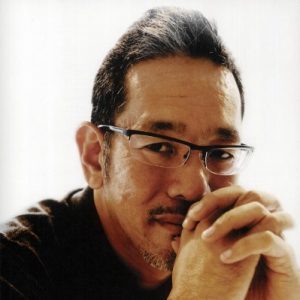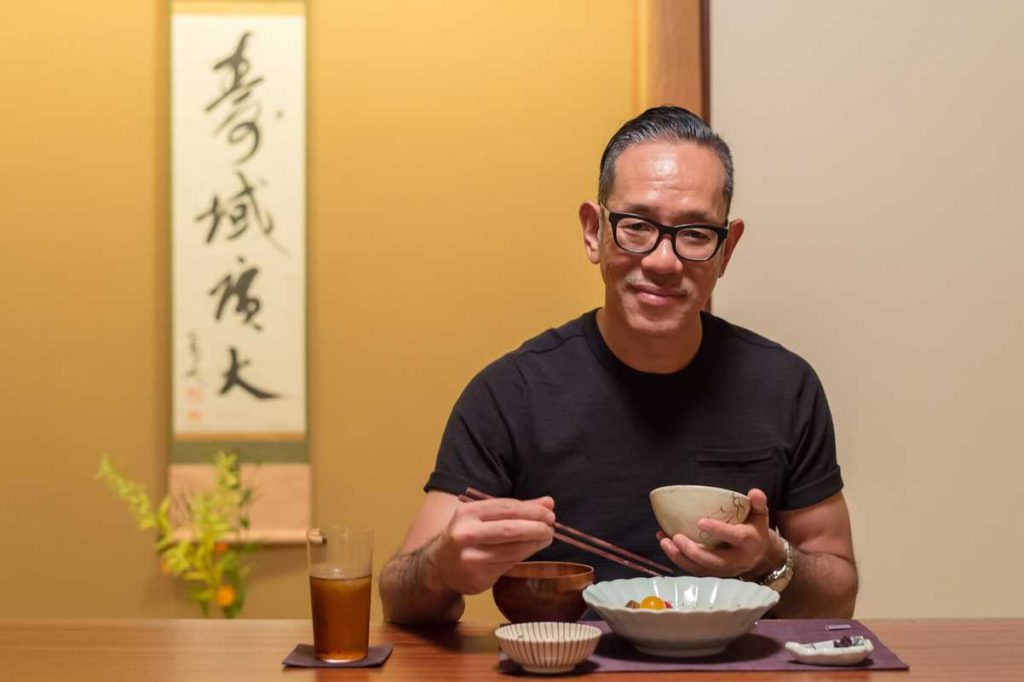Contents
Summary
Naoki Takizawa is a Japanese fashion designer most well known for his body of work at Uniqlo. He started his fashion career working at Issey Miyake, a Japanese fashion brand mostly known for its technology-driven clothing designs. From here, he launched his eponymous fashion label and then shifted tracks to Helmut Lang. today, he is Creative director at Uniqlo.
Early Life and Education
Naoki Takizawa was born in 1960 in Tokyo, Japan. He developed an interest in fashion design during his teenage years, which led him to pursue formal education in the field. Takizawa studied textile design at Tama Art University in Tokyo, where he honed his skills in fabric manipulation and design aesthetics. His education played a crucial role in shaping his distinctive approach to fashion, which often combines traditional Japanese elements with contemporary design.
Biography
Upon graduating from Kuwasawa Design School in Shibuya district, Takizawa joined Issey Miyake as Miyake’s personal assistant. He gradually worked his way up, first overseeing the now-defunct Plantation line and then moving to the design team of Miyake’s women’s collection. In 1993, Miyake gave him complete responsibility for his men’s line, renaming it ‘Issey Miyake Men by Naoki Takizawa’.
In 1999, Naoki Takizawa succeeded Issey Miyake as the Creative Director of the legendary fashion brand, taking responsibility for both the men’s and women’s collections.. During his tenure, Takizawa introduced several iconic designs and continued to push the boundaries of fashion with his experimental use of fabrics and forms. He played a pivotal role in maintaining the brand’s identity while also introducing fresh perspectives. His work was noted for its modern interpretations of traditional Japanese clothing, integrating technology and fashion in innovative ways.
He tells Tank: “To westerners, a jacket is just a jacket. It’s all about the jacket’s meaning and its history. For us it’s the process of making the jacket that fascinates. Japanese people think about the construction, the actual design maybe, how the sleeve should continue from the shoulder. It’s this Japanese idea of creation that drives the Issey Miyake label, the construction of things and the constant struggle to improve on the past.”
In 2007, Takizawa left Issey Miyake to establish his eponymous label, Naoki Takizawa. His independent fashion brand focused on creating unique pieces that reflected his vision of modern aesthetics, often drawing inspiration from historical Japanese attire. And, his collections were known for their minimalist yet sophisticated designs, combining simplicity with high-quality craftsmanship. His debut runway show was a hit. Per Vogue Runway: “A potential differentiating point for this line is its use of technology—a “memory system technique” that allows fabrics to keep their original appearance was one instance; foil printing in copper and sterling silver was another. If fact, the real standout pieces in a somewhat mixed bag were the pleated ones that evoked classical dress rather than anything high-tech…”
In 2010, Takizawa once again shifted tracks and undertook a job designing Helmut Lang men’s collections. Luxury fashion brand Helmut Lang is part of Link Theory Japan, a Fast Retailing subsidiary, so the job put him in direct contact with Yanai. Per WWD: “Takizawa said the two men hit it off from the start, and when the business decision was made to discontinue the Helmut Lang men’s line with the fall 2011 collection, Yanai asked Takizawa to head up the Uniqlo Innovation Project, which focused on using cutting-edge materials to produce highly functional clothing.”
The Tokyo native joined Uniqlo as Design Director in 2011, where he plays a pivotal role in shaping the fashion brand’s creative vision. His responsibilities include overseeing the design and development of its apparel collections, ensuring they align with the brand’s philosophy of simplicity, quality, functionality and sustainability. Takizawa works closely with the design team to integrate traditional craftsmanship with contemporary fashion trends and his expertise and creative direction have significantly influenced the fashion brand’s reputation for producing high-quality, accessible fashion. “Uniqlo is not fashion, this is lifewear, but to make communication, maybe we can take the way from fashion, and at the same time, we can show what the important fundamental value is of each product,” the designer told WWD.
In addition to his work at Uniqlo, Takizawa may also be involved in independent projects and collaborations within the fashion industry. His expertise and experience make him a sought-after figure for special initiatives, exhibitions, and partnerships that explore the intersection of traditional Japanese craftsmanship and contemporary fashion.
Awards and Recognition
Naoki Takizawa, a renowned Japanese fashion designer, has received numerous awards and accolades throughout his illustrious career. He first gained widespread recognition as the creative director for Issey Miyake, where he played a pivotal role in the brand’s global success. His innovative designs, which blend traditional Japanese aesthetics with modern sensibilities, earned him the prestigious Mainichi Fashion Grand Prix in 1997. Takizawa has also been celebrated for his work on the A-POC project, which was awarded the Good Design Award in 2000.
Takizawa’s ability to push the boundaries of fashion through innovative textile techniques and sustainable design practices has made him a respected figure in the fashion industry. After founding his own label, he was honored with the Tokyo Fashion Award in 2009, highlighting his influence on contemporary fashion in Japan. His designs have been featured in major international exhibitions, and he has been invited to collaborate with leading fashion brands and institutions worldwide. Takizawa’s commitment to redefining fashion through experimentation and his dedication to the craftsmanship of clothing have solidified his reputation as a visionary in the industry.
Personal Life
Naoki Takizawa, born in Tokyo, Japan, has always been deeply influenced by the rich cultural heritage of his homeland. Growing up in a family that valued traditional arts and craftsmanship, he developed an early appreciation for the intricate beauty of Japanese textiles and design. This early exposure to art and culture played a significant role in shaping his aesthetic sensibilities. Despite his success in the fashion industry, Takizawa is known for leading a relatively private life, focusing on his work and maintaining a low profile outside of his professional achievements. He often speaks about the importance of balance and simplicity, values that are reflected not only in his designs but also in his personal philosophy.
In his free time, Takizawa enjoys immersing himself in various forms of creative expression, such as painting and pottery. These hobbies allow him to explore different facets of art and design, which, in turn, inspire his fashion creations. Known for his dedication to his craft, he often draws inspiration from nature, traditional Japanese architecture, and everyday life. Despite the demanding nature of his career, Takizawa finds solace in these personal pursuits, which help him maintain a sense of tranquility and perspective. His commitment to preserving Japanese heritage and integrating it into contemporary design is a testament to his deep respect for his roots and his passion for innovation.
Legacy
Naoki Takizawa’s work has had a lasting impact on the fashion industry, both in Japan and overseas. His unique blend of traditional and modern elements continues to influence new generations of designers, solidifying his status as a key figure in contemporary fashion. Per monocle, Naoki Takizawa said: “When I design outfits for the Japanese empress, she explains the occasion and who will be there and I try to come up with something dainty that makes her happy. The more conditions there are, the easier it is; having too much freedom is harder….”
References
- Official website of Naoki Takizawa Naoki Takizawa
- The secret behind Uniqlo’s winning formula Vogue
- With an Evolutionary Approach, Uniqlo Aims to Create New Category BoF
- Instagram account of Naoki Takizawa Instagram
- Q&A with Helmut Lang GQ
- Wikipedia profile of Naoki Takizawa Wikipedia
- Naoki Takizawa Raises Uniqlo’s Fashion Quotient WWD
- Naoki Takizawa: A man with a spirit for transformation The Jakarta Post
- Lang’s new man Vogue
- Takizawa on Uniqlo Dazed
- Naoki Takizawa Spring 2008 Ready-to-Wear Vogue Runway
- Daryoush Haj-Najafi talks with Naoki Takizawa Tank
- Kashiwa Sato Kashiwa Sato
- The Company Uniforms of Fashion Designer Naoki Takizawa Spoon and Tamago
- Dress Met Museum
- Naoki Takizawa Monocle
- Designer Naoki Takizawa finds success in no-frills style The Columbus Dispatch





